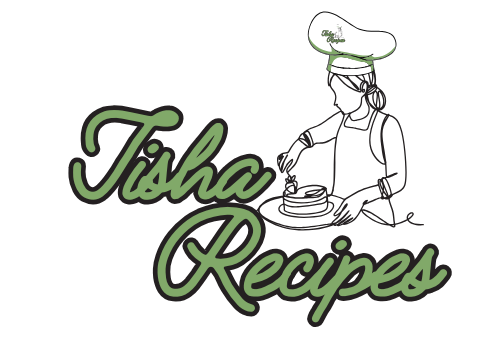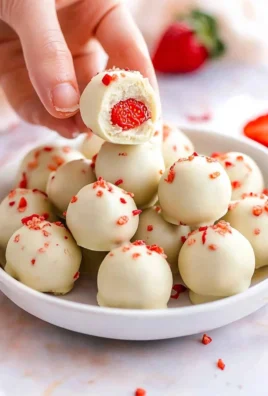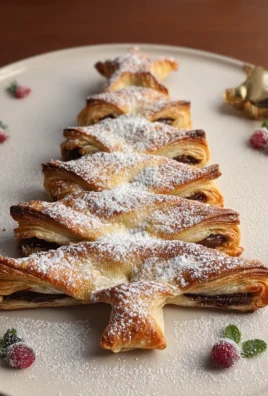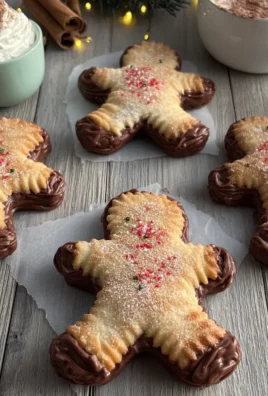
Vanilla Bean Panna Cotta, a silky and elegant Italian dessert, has captivated food enthusiasts worldwide. The name translates to “cooked cream” in Italian, and it perfectly encapsulates the dessert’s essence. This creamy, melt-in-your-mouth treat, infused with the floral and aromatic notes of real vanilla beans, is simplicity at its finest. Whether served at a high-end restaurant or made in a home kitchen, panna cotta represents the pinnacle of effortless sophistication.
What is Vanilla Bean Panna Cotta?
Panna cotta is a classic dessert made with a base of sweetened cream thickened with gelatin and molded into a delicate shape. The addition of vanilla bean elevates the dessert to new heights by introducing complex, natural flavors. Vanilla beans, derived from orchid pods, lend their unmistakable aroma and speckled appearance, setting this version apart from others.
This dessert is known for its adaptability. From being served with fruity compotes to rich chocolate sauces, the versatility of panna cotta allows it to suit any occasion, whether it’s a light summer treat or a festive holiday dessert.
A Brief History of Panna Cotta
Panna cotta’s roots can be traced back to Northern Italy, particularly in the Piedmont region. Historically, it was made using cream, sugar, and fish bones as a natural source of gelatin. Over time, this rustic creation evolved into the sophisticated dessert we know today. As the use of commercial gelatin became widespread, panna cotta recipes simplified, allowing the dish to spread beyond Italy.
Vanilla wasn’t always a part of the traditional recipe. Its introduction coincided with the global trade routes that brought vanilla beans from Madagascar and Tahiti to European markets. The addition of this exotic ingredient transformed panna cotta, making it a luxurious choice for special occasions.
The Key to Perfect Vanilla Bean Panna Cotta
The Role of Ingredients
- Cream: Full-fat cream forms the dessert’s base, providing richness and a velvety texture. Using high-quality cream is crucial for achieving the desired consistency.
- Vanilla Beans: Unlike vanilla extract, vanilla beans offer an authentic, deep flavor with visible specks that enhance the dessert’s appearance.
- Gelatin: Gelatin is the structural backbone of panna cotta, creating its delicate jiggle. The right amount ensures a smooth, firm, yet creamy texture.
- Sugar: Adds sweetness without overpowering the natural vanilla flavor. Fine granulated sugar dissolves quickly and evenly.
- Milk: Often added to lighten the cream mixture slightly, balancing the dessert’s richness.
Preparation Phase
Essential Tools and Equipment
- Heavy-bottomed Saucepan: Ensures even heating, preventing scorching.
- Mixing Bowl: For dissolving gelatin or combining ingredients.
- Whisk: Essential for blending and aerating the mixture.
- Fine Mesh Strainer: Filters out any lumps, ensuring a silky finish.
- Measuring Cups and Spoons: For precise ingredient measurements.
- Serving Molds or Ramekins: Used to shape the panna cotta.
Step-by-Step Preparation
- Prepare the Gelatin
- Sprinkle gelatin over cold water in a small bowl. Let it bloom for 5 minutes. This ensures it dissolves evenly in the cream mixture.
- Infuse the Cream
- Split the vanilla bean lengthwise and scrape out the seeds. Combine the seeds, bean pod, cream, milk, and sugar in a saucepan. Heat over medium heat until the sugar dissolves and the mixture is warm but not boiling. Allow the vanilla to steep for 10 minutes for maximum flavor infusion.
- Dissolve the Gelatin
- Remove the vanilla bean pod and stir the bloomed gelatin into the warm cream mixture. Whisk until completely dissolved.
- Strain the Mixture
- Pour the cream mixture through a fine mesh strainer into a large bowl. This removes any undissolved particles or clumps, ensuring a smooth dessert.
- Pour and Chill
- Divide the mixture evenly into ramekins or molds. Cover with plastic wrap and refrigerate for at least 4 hours, or until fully set.
- Unmold and Serve
- To unmold, run a knife around the edges and briefly dip the mold into warm water. Invert onto a plate and garnish as desired.
Preparation Tips
- Use fresh, high-quality vanilla beans for the most authentic flavor.
- Don’t allow the cream mixture to boil, as this can alter the dessert’s texture.
- Strain the mixture thoroughly to avoid lumps or uneven consistency.
- Let the gelatin bloom fully before incorporating it to prevent clumping.
Ingredient List
- 2 cups heavy cream
- 1 cup whole milk
- 1/2 cup granulated sugar
- 1 vanilla bean
- 2 teaspoons unflavored gelatin
- 2 tablespoons cold water
Enhancements and Nutritional Insights for Vanilla Bean Panna Cotta
Perfect Pairings: Side Dish Recommendations
While Vanilla Bean Panna Cotta is stunning on its own, pairing it with complementary side dishes elevates its appeal. These accompaniments balance its creamy texture and enhance the flavor profile.
1. Fresh Berry Compote
A medley of raspberries, blueberries, and strawberries simmered with a touch of sugar and lemon juice creates a tangy compote. The natural acidity of the berries offsets the panna cotta’s richness, while their vibrant colors add visual appeal.
2. Caramel Sauce
Smooth and buttery caramel sauce lends a deep sweetness that perfectly complements the floral vanilla notes. A drizzle of warm caramel over the panna cotta creates an indulgent dessert.
3. Chocolate Ganache
Dark chocolate ganache adds a luxurious and slightly bitter contrast to the creamy panna cotta. The combination satisfies both chocolate and vanilla lovers.
4. Citrus Zest and Honey
Sprinkling fresh orange or lemon zest over the dessert, paired with a light drizzle of honey, provides a fresh and fragrant topping that enhances the vanilla’s subtleties.
5. Almond Biscotti
Crisp almond biscotti served alongside panna cotta introduces a satisfying crunch. The nuttiness of the biscotti complements the dessert’s creaminess.
6. Roasted Stone Fruit
Peaches, plums, or apricots roasted with a touch of brown sugar and cinnamon develop a caramelized sweetness. They make an excellent seasonal accompaniment.
7. Tropical Mango Coulis
A smooth puree of ripe mango adds a tropical flair to the dessert. Its bright, sweet flavor pairs beautifully with the creamy panna cotta.
8. Candied Nuts
Caramelized pecans, almonds, or hazelnuts provide a crunchy contrast and a toasty flavor that enhances the vanilla’s warmth.
Nutritional Information and Health Benefits
Vanilla Bean Panna Cotta is more than just a treat; it can be a surprisingly balanced dessert when made with the right ingredients and portion sizes.
Nutritional Highlights
- Calories: The dessert is calorie-dense due to its cream base, making it a satisfying choice for those seeking a rich indulgence.
- Protein: The addition of milk and gelatin contributes to its protein content, offering more nutritional value than many other desserts.
- Calcium: Cream and milk provide a good source of calcium, which supports strong bones and teeth.
- Low Sugar Option: By reducing sugar or using alternatives like stevia, panna cotta can cater to those monitoring their sugar intake.
Health Benefits of Vanilla Beans
- Rich in Antioxidants: Vanilla beans contain antioxidants that help combat free radicals in the body.
- Mood-Boosting Properties: The aroma of vanilla is known for its calming and uplifting effects, making it a comforting dessert choice.
- Anti-Inflammatory Benefits: Some compounds in vanilla beans may have mild anti-inflammatory properties.
Balancing Indulgence
While panna cotta is a dessert, its simplicity allows for mindful eating. A small serving paired with fruit or nuts can satisfy cravings without excessive calorie intake. Opting for low-fat dairy or plant-based cream alternatives can make it a lighter choice for those with dietary restrictions.
Common Mistakes to Avoid and Tips for Perfection
1. Overheating the Cream
Boiling the cream can lead to a grainy texture and muted vanilla flavors. Keep the heat low and controlled to maintain the dessert’s silky smoothness.
2. Improper Gelatin Handling
Failing to bloom gelatin properly results in clumps or uneven texture. Always sprinkle gelatin over cold water and let it sit for a few minutes before heating.
3. Skipping the Strain
Straining the mixture ensures a lump-free consistency. This step is essential for achieving the signature velvety texture of panna cotta.
4. Rushing the Cooling Process
Allow the panna cotta to set undisturbed in the refrigerator. Quick cooling methods, such as placing it in the freezer, can lead to uneven setting or separation.
5. Overpowering the Vanilla
Using too much vanilla extract or overpowering flavorings can overshadow the subtle sweetness of the cream. Balance is key.
6. Incorrect Mold Unmolding
Dipping the mold in hot water for too long can cause the panna cotta to melt around the edges. A quick dip is sufficient to release it without compromising its shape.
7. Serving Too Cold or Warm
Panna cotta tastes best when served slightly chilled but not ice-cold. Allow it to sit at room temperature for a few minutes before serving to enhance its creaminess.




Leave a Comment